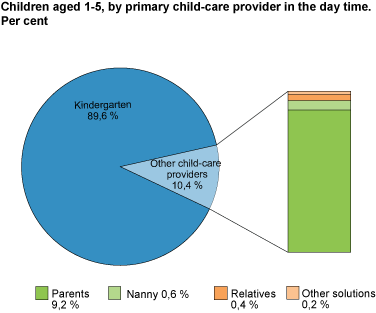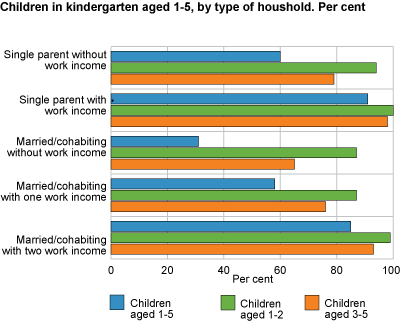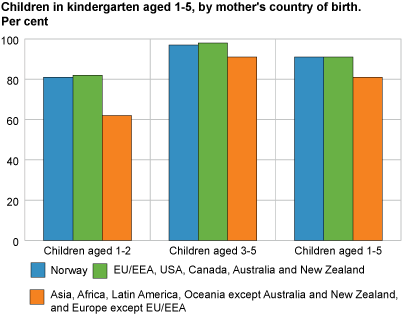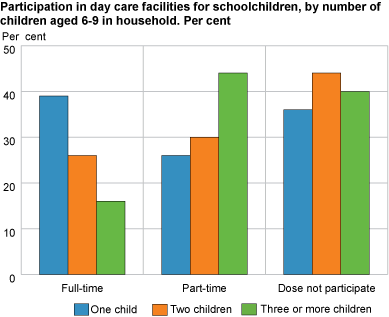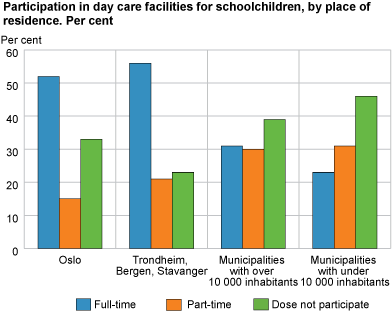Content
Published:
Many prefer kindergarten
Many parents preferred kindergarten as the main child-care provider in the daytime. On the other hand, only a few parents chose relatives or a nanny.
Seventy-nine per cent of children aged 1-2 and as much as 96 per cent of children aged 3-5 attended kindergarten. Ninety per cent of all children between 1 and 5 years participate in kindergarten, while 11 per cent are mainly supervised by the mother, father or others in the household.
Not all will apply for kindergarten
Sixty-eight per cent of children aged 1-2 who do not have a full-time place in kindergarten receive cash-for-care. The parents of 41 per cent of these children would have applied for kindergarten if the cash-for-care support was discontinued. Thirty-four per cent will not apply for kindergarten, while 25 per cent are either undecided or have not answered the question.
60 per cent in the day care facilities for schoolchildren
More than 60 per cent of children aged 6-9 are participating in the day care facilities for schoolchildren (SFO). Participation in the SFO is more common among children aged 6-7 (75 per cent) than among children aged 8-9 (47 per cent). Most parents reported that their child is home with other family members as a valid reason for the child not participating in the SFO. Participation in other activities and being home alone before and after school were also two of several other relevant reasons for children not attending the SFO.
Tables:
- Table 1 Children aged 1-2, by primary child-care provider in the daytime. Per cent.
- Table 2 Children aged 3-5, by primary child-care provider in the daytime. Per cent.
- Table 3 Children aged 1-5, by primary child-care provider in the daytime. Per cent.
- Table 4 Children aged 1-2. Proportion of children in different groups for whose parents recive cash-for-care. Per cent.
- Table 5 Children aged 1-2. Proportion of children in different groups whose parents want a place in kindergarten, if the cash-for-care will be discontinued. Per cent.
- Table 6 Children aged 6-9, by participation in day care facilities for schoolchildren. Per cent.
- Table 7 Child aged 6-9, by participation in homework help service. Per cent
Contact
-
Statistics Norway's Information Centre
E-mail: informasjon@ssb.no
tel.: (+47) 21 09 46 42

